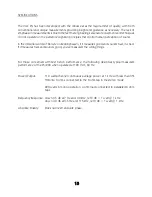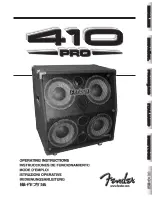
11
TIPS & ADVICE SECTION
A Word About Tubes in General
It is true that each brand of tube sounds different in a particular high resolution circuit. This is because
no two manufacturers make a tube type in quite the same way, and the central tendencies of the
performance parameters will differ slightly with each maker. To emphasize the point, examine the
plate structure of any two 6SN7 from different manufacturers and you may find that they are not the
same shape and size. (Be careful here, as often a tube is made by a firm other than indicated on its
label. In the heyday of tubes it was common to crossbrand between major labels, such as GE and
RCA. Today many labels do not manufacture their tubes at all, including Gold Aero and RAM.)
This sonic variability may at first seem a liability, but further thought will reveal that it is an advantage,
just like the ability to adjust VTA on a tone arm. The owner of a tube amplifier can select those tubes
which sound like the real thing in his/her specific system. Of course, if the manufacturer you prefer
is rare you may want to purchase a few spare tubes for the future.
How long should tubes last? It has long been known in professional circles (and probably now
forgotten) that a tube such as the 12AX7 will display better performance characteristics after two
years of continual operation than when it was new. In normal use it is not unusual for a low level
tube to last 5 years or longer. Output tubes are another story, as they are continually providing
significant amounts of current. Here the sound is your best guide. Certainly a tube should be
replaced when its emission is significantly down or its transconductance is substantially out of
specification. In normal use, output tubes will last at least 2 years and perhaps more than 5 years.
It is normal to see a slight violet glow in a power tube such as a 300B or EL34. However, a vivid
violet indicates excess current flow through the tube and should be investigated.
VAC can test tubes for concerned customers.



































